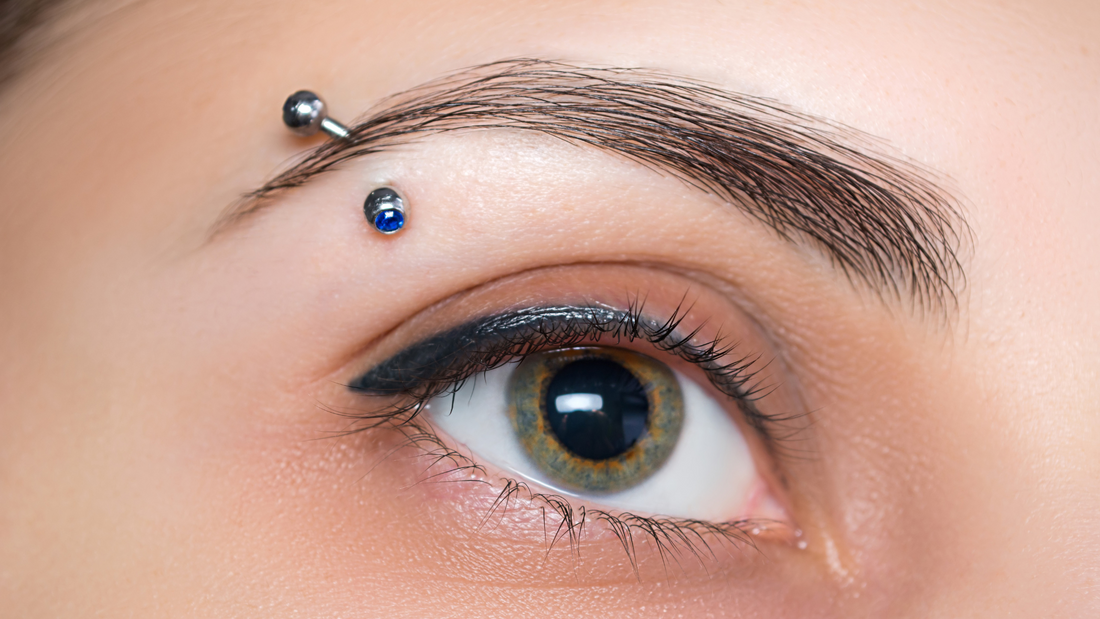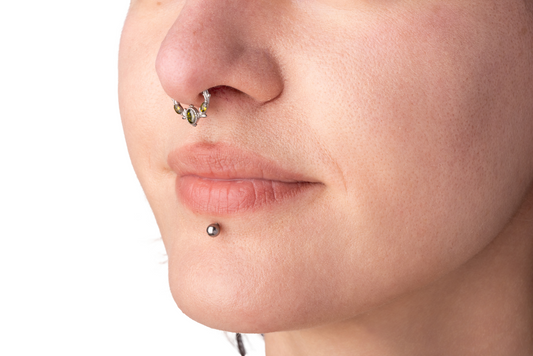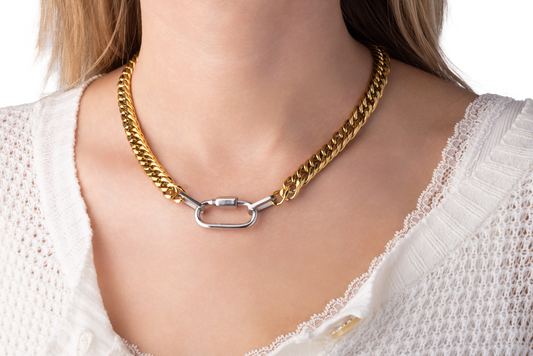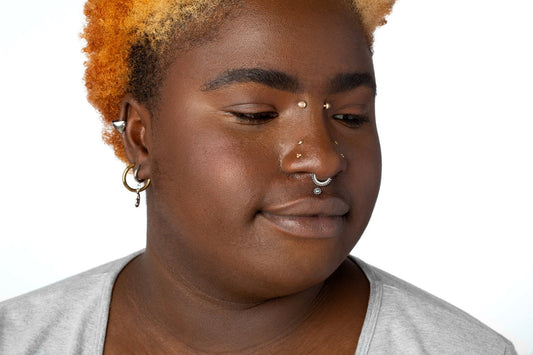When getting a new piercing, the last thing you want to think about is a beloved piercing migrating or even worse... rejecting. While most piercings heal without issue, there are occasional complications worth being aware of. One of those is piercing migration. While it is not especially common, it does happen frequently enough that it is helpful to be aware of the signs (especially if you have a piercing that is especially prone to migration or rejection). The good news? Migration can often be addressed, and in many cases, prevented altogether with the right jewelry, care, and placement.
In this article, we'll break down what migration really is, how it differs from rejection, and the key signs to look out for—plus what you can do if it happens to you.
Migration vs. Rejection: What’s the Difference?
Before diving into signs of migration, it’s important to understand how it differs from piercing rejection. While they’re related, they aren’t the same thing.
Rejection is when your body actively trying to get rid of the jewelry altogether. It treats the piercing like a foreign object and works to push the jewelry completely out, often resulting in the jewelry coming close to the surface and eventually pushing completely out.
While this is possible with any piercing, surface piercings (like eyebrow, navel, or dermals) are more prone to rejection due to shallow tissue of the piercing area.
Want to learn more about rejection? Read our blog article about the causes, signs, and how to respond to piercing rejection here.
Migration happens when your body gradually pushes the jewelry from its original placement to a new spot. In some cases, migration can lead to complete rejection. If a piercing shows signs of migration, its best to monitor it for signs of rejection.

What Causes a Piercing to Migrate?
Migration can happen for a variety of reasons, including:
- Improperly jewelry size or type.
- Incorrect placement.
- Constant movement, friction, or pressure.
Some piercings are also just more prone to migration than others -- like surface piercings (anti-eyebrow, belly button, eyebrow) and dermal piercings. These piercings are typically placed in a flat area of the body. Unlike a lip or nostril piercing that has a distinct front and back, surface and dermal piercings go through a ridged or flat surface (hence the name!)
Signs Your Piercing May Be Migrating:
Keep an eye out for the following signs that your piercing may be on the move:
- You can see more of the jewelry than before: If more of the bar or post is visible near your piercing, or you can see your jewelry rising to the surface (under your skin) your piercing could be migratiing!
- The holes looking large or thinner: The skin between the entry and exit holes could appear thinner, stretched, or more transparent when your piercing is migrating.
- Discomfort, irritation, or redness: A migrating piercing may become irritated or inflamed -- not necessarily due to infection but because your body is moving the jewelry.
- The jewelry moves more easily or feels looser: If your jewelry feels less secure or moves more than it used to, your piercing may be shifting in the tissue.
What to Do If You Suspect Your Piercing is Migrating:
Signs of migration is a cause for concern, but take time to assess your piercing before panicking. Here's what you can do:
- Monitor the piercing closely: Take photos every few days to track changes in position or appearance. Comparing progress over time can help confirm migration.
- Visit a professional piercer: An experienced piercer can examine your piercing and let you know if it’s migrating, at risk of rejection, or just healing unusually. They can also recommend appropriate jewelry swaps or aftercare adjustments.
- Switch to better-fitting jewelry: Jewelry that’s too small, heavy, or made from low-quality materials can cause problems. Consider upgrading to high-quality materials like titanium or niobium and using appropriately sized jewelry.
- Avoid pressure, pulling, or irritation: Avoid sleeping on your piercing, catch it on clothing, or play with the jewelry. Gentle care is key to minimizing stress on the area.
- Retire your piercing: If your piercing is consistently migrating, it is most likely on the path to full rejection. You can always re-pierce the area later, after it has fully healed.
Migration can be frustrating—but it’s not the end of the world. By catching it early and taking the right steps, you may be able to stop the movement or at least minimize damage. As always, checking in with a professional piercer and proper aftercare are your best tools for the health and longevity of your piercing.




